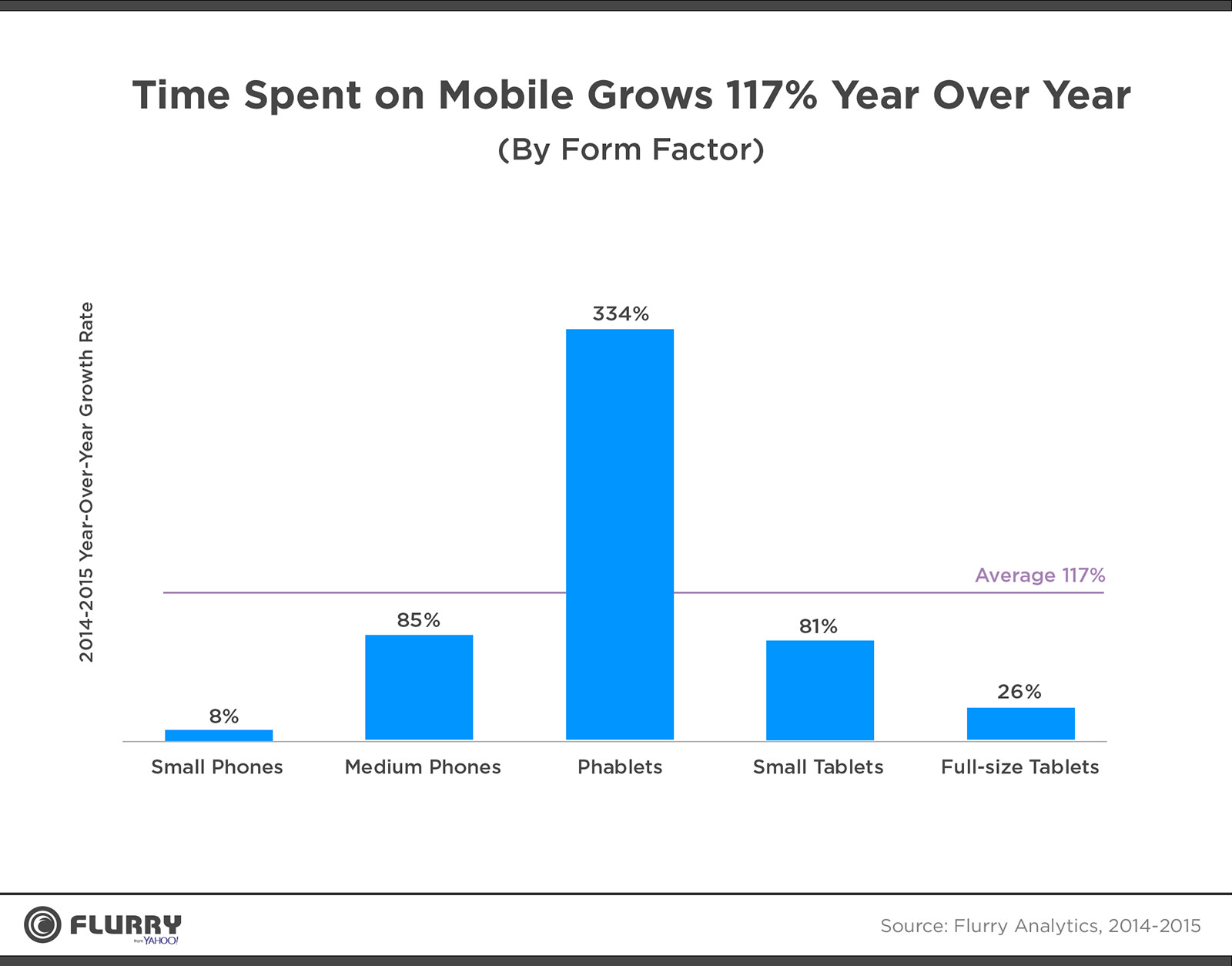Research: We're mobile addicts but we just don't want new smartphones


Time spent on phablets grew 334 percent year on year - 2.9 times more than the average - compared with 117 percent for all form factors, according to Yahoo's analytics firm Flurry.
With smartphones reaching saturation point, fewer consumers are planning to buy a new one, but we're more addicted than ever to the devices that we already have.
As Accenture highlights in its survey of 28,000 people in 28 countries, demand for new smartphones is on the wane across the globe, with just 48 percent of respondents planning to buy a smartphone in 2016, down from 54 percent last year.
That assessment chimes with figures from analyst firm IDC, which reports 2015 as the first year of single-digit growth for worldwide smartphone shipments on record.
Accenture's survey also finds lacklustre demand for IoT devices, such as wearables and smartwatches, which hold the potential to be the next boom for the mobile industry.
While Apple's Watch could have sparked interest in smartwatches and wearables across the industry, Accenture records that just 13 percent of respondents plan to buy a smartwatch next year.
It says 62 percent of respondents think IoT devices are too expensive while 47 percent are concerned about security and privacy risks.
A further 18 percent report setting a wearable aside until they receive safety guarantees, signalling that customers view the risk of using them as greater than the reward.
IDC incidentally is forecasting wearable shipments to rise 44 percent over the next year to 111 million in 2016, a third of which will be smartwatches.
However, Yahoo's app analytics unit Flurry offers another way of looking at consumers' relationship with mobile devices, reporting an intensifying addiction to smartphone usage, particularly among phablet owners.
According to Flurry, mobile usage grew 58 percent in 2015 compared with last year, which was slower than the 74 percent growth it tracked between 2013 and 2014.
But Flurry estimated that 40 percent of 2015's app usage growth came from existing users, compared with 20 percent in 2014 and 10 percent 2013. Flurry tracks 2.1 billion smart devices worldwide.
The biggest gainers in the past year have been personalisation apps, such as Android lock-screens and Emoji keyboards, whose sessions grew 332 percent.
Growth in Emoji app usage was driven largely by communications on messaging apps, such as Facebook Messenger, Whatsapp, Line, and Snapchat, Flurry notes.
The other major growth sector has been news and magazine apps, which registered a 135 percent rise over the year.
Flurry's numbers also notes that people using phablets are engaging with apps at a much higher rate than users of smaller devices and tablets, with growth in the use of news and magazine apps on phablets growing 4.8 times faster than that on other devices.
Overall, time on phablets grew 334 percent year on year compared with 117 percent for all form factors.